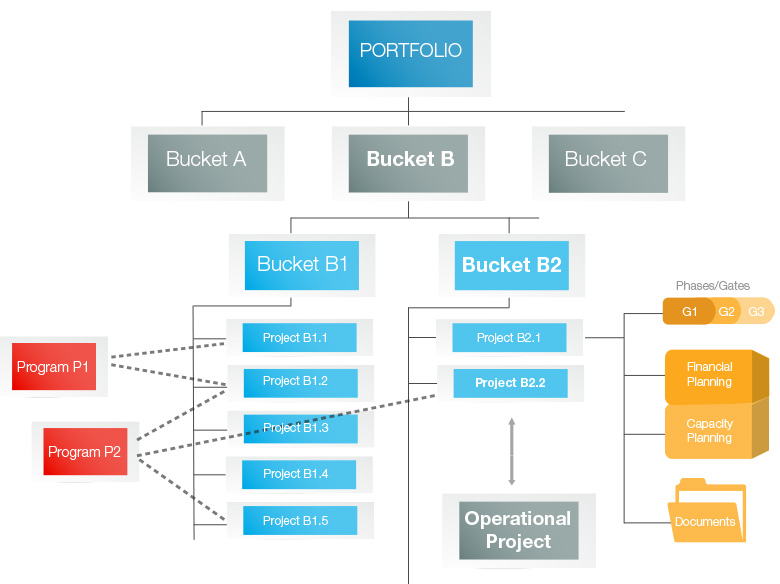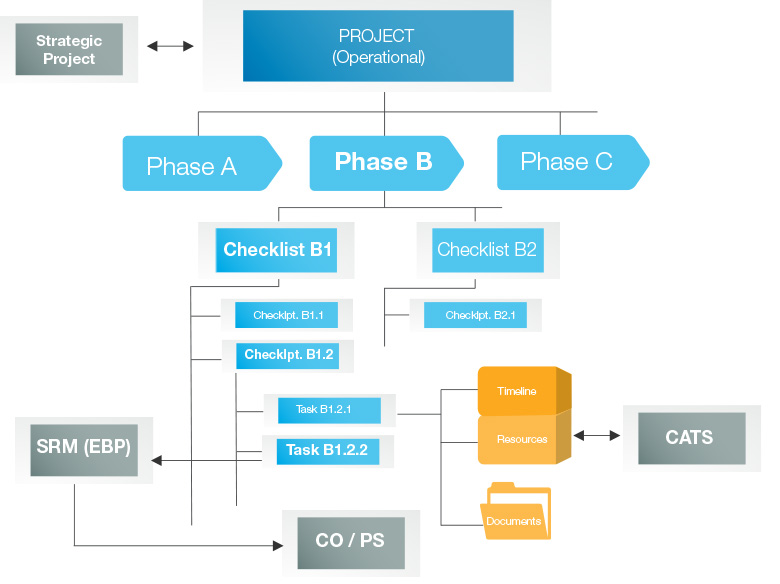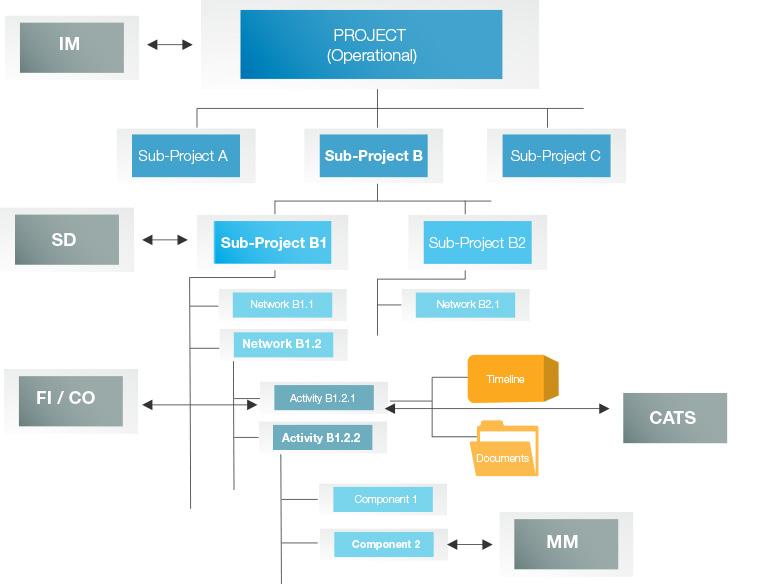Project / Portfolio Management
Rapid growth in automation and digitization has induced the need for expert PPM solutions to improve productivity across different industries.
Overview
With scope on limited resources, the requirements for effective project and portfolio management are huge: in particular signals, that indicate time, budget and quality issues quite early in order to start the right countermeasures, are needed.
With special emphasis on this fact SAP offers a modern, flexible and ergonomically advanced solutions for the strategic and operational (multi-) project and portfolio management (PPM, formerly (x)RPM/cProjects).
The level of accounting assignment and settlement can either be realized through the integration with the ERP module Controlling (CO) or the Project System (PS).
Alternatively the Project System can be used together with the Investment Management (IM) as a classical ERP solution.
With respect to mid-size enterprises we recommend the Conessent Portfolio Manager, which was developed in cooperation with KEON Solutions and is fully integrated in the SAP Environment.

By using the portfolio management you can plan, steer and control the strategic scope of your projects. The project budget will be broken down in different portfolios and, within them, hierarchically subdivided into buckets. The end nodes of this structure can then be assigned to specific projects (strategic view).

The financial and capacity planning on projects can be divided into customer-specific categories, groups and views and aggregated to the level of buckets. The corresponding values can be captured annually, quarterly or monthly and presented in diagrams. The timeline planning is performed by using phases and gates (e.g. Design – Realization – Launch) and can be presented in a timeline monitor. If required documents and notes can be attached.
For the purpose of an overall monitoring projects can be grouped in programs or initiatives. A corresponding operational project can be created automatically or manually (in a subsequent step). By using the project management you can plan, steer and control the operational execution of your projects.
To do this the project execution is divided into phases (Project Lifecycle: e.g. Specification – Programming – Acceptance). Different checklists can be assigned to the phases and their positions can be linked to appropriate tasks. In order to ease and minimize the data input, projects with a similar structure can be created with reference to predefined templates.

The detailed planning of resources and their feedback (if done with CATS) is managed on the task level. The procurement of material and services can be initiated through the ERP module MM or SRM / Enterprise Buyer Professional (EBP).
The processing of the timeline takes place on tables or alternatively with interactive Gantt charts (incl. drag & drop functionality to move/postpone events). Documents and notes can be attached if required. For account assignment and settlement purposes as well as for the monitoring of commitments and actual values that result from procurement, tasks can automatically or manually be linked to internal orders (CO) or WBS elements (PS) in the ERP system.
Third parties may be involved in project processing using cFolders.
The level of account assignment and settlement in the ERP module PS (Project System) can be managed in combination with the PPM web-solution. To do so, tasks in the PPM Project Management are linked to WBS elements in PS, which can be structured in a hierarchy. As a result of this assignment, the available budget in the PPM Portfolio Management can be monitored and controlled against the commitment and actual values on WBS elements.
If requirements on account assignment objects and settlement are low (pure cost collectors), you can link tasks in PPM Project Management with internal orders (CO) instead of WBS elements (PS). Aside the functionalities for account assignment and settlement purposes the Project System represents a ‘classical’ and independent alternative to the PPM web-solution.
WBS elements are hierarchically organized in PS in accordance with content, technical and/or organizational aspects of a particular project using the ‘Project Builder’. The result is a so-called Work Breakdown Structure (WBS). For the detailed planning and actual confirmation of dates and single tasks, so-called networks – with a further break-down into single activities – are created on the level below and linked to the relevant WBS elements. The Critical Path (CPM) can then be calculated from the arrangement of activities (predecessor/successor relationships).

The planning and assignment of resources in general happens on the level of activities. Plan, commitment and actual values are monitored against the budget values allocated to a project and distributed down to the level of single WBS elements. An automatic budget availability control is available and can be switched on if required.
Budget management in general is reflected in the module IM (Investment Management) where budget programs can be defined and hierarchically structured and divided into positions. Alongside this structure budget can be planned in a first step (bottom-up) and then be distributed down on single IM-positions in accordance with the budget decision taken.
Based on an approval step the budget is transferred from IM positions to WBS elements where it is then monitored on project level. Changes to the budget is managed and can be traced via budget returns and supplements.
The Conessent Portfolio Manager combines many years of experience in the field of project and portfolio management with modern web technology.
A special focus is on the highly flexible structuring of projects and their allocation to portfolios, as well as efficient financial, capacity and milestone planning.
Resources
Our comprehensive understanding of
SAP® and business insights
enables us to listen, challenge and deliver innovative end-to-end solutions, ensuring the success of your existing and future SAP® investment.
